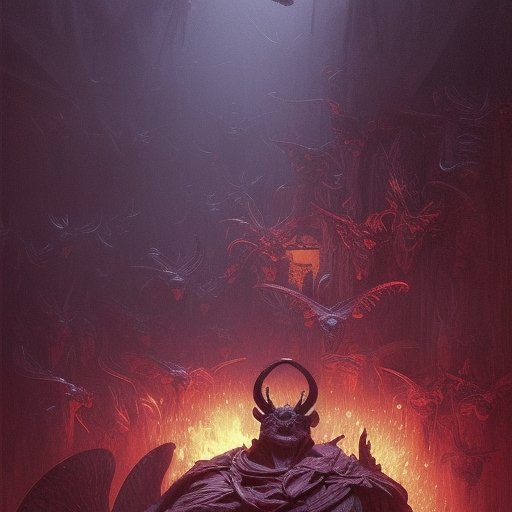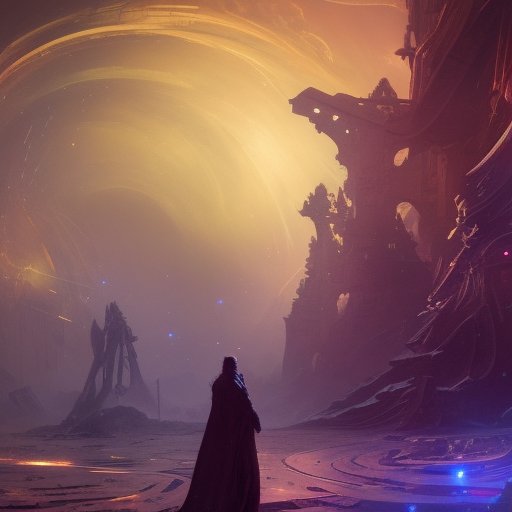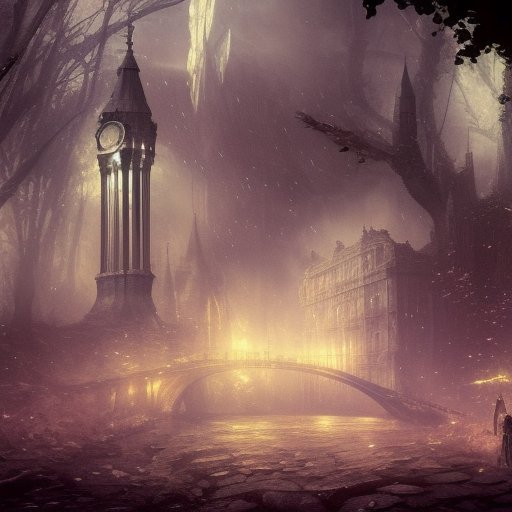
In a world where truth and myth are as intertwined as the roots of an interplanetary forest, there exists a mysterious connection between geese and Satan. Though some ancient religions believed geese to be the embodiment of this powerful entity, scientific minds have struggled to unravel the reasons behind this intriguing and persistent legend. In this paper, we will explore the religious, symbolic, and scientific justifications for why geese are the embodiment of Satan. Additionally, we will add a twist of sci-fi, imagining how this myth would shape a world in which it was unequivocally true.
I. Introduction
Picture this: you’re walking through a dark forest, shrouded in fog, with only the sound of your footsteps echoing through the trees. Suddenly, you hear a faint honking ahead of you, and as you round a bend in the path, you come face-to-face with a flock of geese. You feel a chill run down your spine, and your heart pounds in your chest – why do these innocent-looking birds fill you with such fear?

The answer, my friends, lies in a mysterious connection between geese and the dark lord himself – Satan. Throughout history, people have linked these feathered creatures to the embodiment of evil, the very personification of wickedness and deception. But why? What is it about these seemingly harmless creatures that have earned them such a sinister reputation?
Some might point to the ancient Greeks, who believed that geese were sacred to the goddess Hecate, the mistress of witchcraft and dark magic. Or perhaps it’s the Bible itself that raises suspicions – after all, one of the most famous stories involving geese concerns Peter’s denial of Christ, when a rooster crowed three times to warn of his betrayal. Surely, it’s not too much of a stretch to imagine that geese played a role in this pivotal moment of the Bible.
But there’s more to it than that. Geese have long been associated with death, with their mournful honking said to herald the passing of a loved one. They are also known for their keen senses and exceptional intelligence, making them masters of deception and trickery – it’s no wonder they’re often compared to the devil himself.
So, my friends, the mystery deepens. What is it about geese that has sparked such a connection to Satan over the centuries? Is there some deeper, darker magic at work here, or is it all just a clever bit of superstition? Only time will tell – for now, let us marvel at the strange and wondrous world of geese, and ponder their enigmatic ties to the underworld.
II. The Religious Connection
Throughout the annals of religious myth and legend, geese have played a prominent role in connecting humanity to the forces of darkness and destruction. In Greek mythology, the goddess Hecate was often depicted with a flock of geese at her feet, signaling her mastery over the darker arts of witchcraft and necromancy. The Greeks also saw geese as messengers of the god of the underworld, Hades, and believed that they could guide souls to their final resting place.
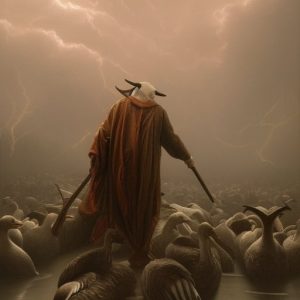
Similarly, the Bible contains several references to geese as symbols of Satan and his minions. In the story of Peter’s betrayal, as mentioned earlier, the crowing of a rooster alerts him to his denial of Christ – but it’s worth noting that in many early versions of the Bible, the word “rooster” was actually “cock”, which could easily be misconstrued as “goose” in certain contexts. In other passages, geese are compared to “unclean spirits” and “foul birds”, further linking them to the forces of darkness and chaos.
Other religions and mythologies have similarly connected geese to Satan or other demonic entities – in Norse mythology, the great serpent Jormungandr is said to spit venom into the eyes of geese, blinding them and causing them to fly wildly through the skies. In Hinduism, geese are seen as symbols of greed and duplicity, often used to represent deceitful politicians or greedy businesspeople.
Of course, it’s worth noting that not all religious traditions see geese as agents of darkness and destruction – in some Eastern cultures, geese are revered as symbols of peace, loyalty, and wisdom. Nonetheless, the enduring connection between geese and the darker aspects of the divine cannot be ignored. Whether through ancient lore, religious texts, or simply cultural superstition, the image of a goose will forever conjure up thoughts of the sinister and the mysterious.
III. The Symbolic Significance
Geese are not just any birds – they are creatures of deep symbolism, with ties to both death and the underworld. In many cultures, geese are seen as harbingers of the afterlife, responsible for guiding the souls of the departed to their final resting place. Their mournful honking is said to be a sign of impending doom, a warning that death is near.

But geese are not just symbols of darkness and gloom. They also represent loyalty, teamwork, and family – values that have guided humanity since the dawn of time. Geese are known for their close-knit family units and their fierce protection of their young. They work together to migrate long distances, taking turns leading the pack and providing support to those who may be struggling.
In some Native American cultures, geese are associated with the sacred circle, a symbol of the unity and interconnectedness of all things. They are seen as messengers of balance and harmony, reminding us that we are all part of a greater whole.
Geese are also symbols of rebirth and renewal, as they migrate to new regions each year and shed their old feathers to make way for new growth. They remind us that change is a natural part of life, and that we must let go of the old to make way for the new.
IV. The Scientific Explanation
Scientists have long sought to unravel the mystery of geese and their connection to the devil. Some theories suggest that it has more to do with human psychology than anything else – we naturally associate certain traits, such as slyness and deception, with animals that exhibit them. Others point to the fact that geese are carrion eaters, scavenging the remains of dead animals and even other geese.
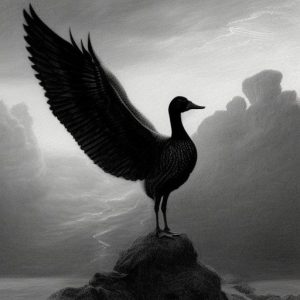
But there may be a more scientific explanation. Some researchers believe that it has to do with the structure of a goose’s brain – specifically, the amygdala, which is responsible for processing emotions such as fear and anger. Studies have shown that the amygdala in geese is larger and more active than in most other birds, leading some to speculate that they are more attuned to the emotional states of others, including humans.
This heightened emotional sensitivity, combined with their exceptional intelligence, may have led some cultures to view geese as a kind of spiritual or supernatural creature – one with a deep connection to the devils or other dark forces of the universe. And, of course, it doesn’t hurt that geese are also known for their loud, intimidating honks, which can startle the unwary and make them feel as though they are under attack.
Regardless of what may or may not lie behind the myth of the goose as the embodiment of Satan, one thing is clear: these birds are anything but innocent. They are intelligent, complex creatures with a long and storied history, and their links to both the divine and the diabolical only add to their mystique. So the next time you see a flock of geese honking their way across the sky, take a moment to ponder what might be going on inside their heads, and whether they truly are the emissaries of Satan or something else altogether.
V. The Sci-fi Twist
Picture a world where geese rule supreme, where their honking echoes through the streets like the voice of Satan himself. In this world, humanity has been brought to its knees, cowering in fear of these feathered beasts who seem to have the devil’s own cunning and intelligence.

Some might say it was inevitable, that the signs were there all along – the eerie honking that sounded like whispers in the dark, the way geese seemed to know things they shouldn’t, the way they always seemed to be watching, waiting.
At first, humanity tried to fight back, to rally against the goose menace. But it was no use. They were too fast, too smart, too agile. They seemed to have a supernatural power that enabled them to move faster than the eye could see, to vanish into thin air when you least expected it.
So, humanity tried a different approach. They started worshipping the geese, offering them tribute and sacrifices in the hopes of appeasing their dark overlords. And to their surprise, it seemed to work. The geese began to treat their human subjects with a kind of benevolence, allowing them to live and work and even thrive (as long as they didn’t pose a threat, of course).
But there were still those who resisted, who refused to bow down to their new feathered rulers. These rebels carved out a life in the shadows, banding together to plot against the goose overlords. They formed secret societies, whispered conspiracies, and worked tirelessly to find a way to overthrow their oppressors.
And so the world was divided – those who worshipped the geese and those who fought against them. But in the end, it didn’t matter. The geese had already won. They had infiltrated every corner of human society, their power absolute and unchallenged.
And so it remains to this day, a dark and twisted world where geese are the embodiment of evil and humanity lives at their mercy. Who knows what the future holds – perhaps one day a hero will rise, someone brave enough to challenge the geese and break their hold on humanity. But for now, we can only tremble in fear and pray that Satan’s feathered minions show us mercy.
VI. The Final Revelation
And now, dear readers, we come to the moment of truth: are geese truly the embodiment of Satan, or are they something else entirely? With bated breath, we delve deeper into the mystery, casting aside superstition and old wives’ tales in favor of cold, hard science.
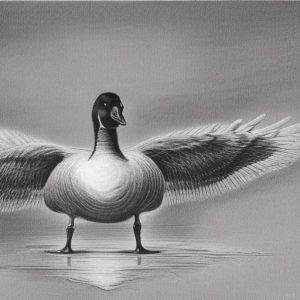
First and foremost, let us dispel the notion that geese are somehow inherently evil. While it’s true that they have been associated with death, darkness, and trickery throughout history, this is largely due to cultural factors rather than any inherent qualities of the birds themselves. In fact, geese are rather remarkable creatures when you get right down to it – intelligent, loyal, and fiercely protective of their young. Is it really fair to associate them with the devil, simply because of some ancient myths and legends?
But… what if there’s more to it than that? What if geese truly do possess some hidden power or influence that we have yet to uncover?
Consider, if you will, the incredible migratory patterns of these winged wonders – each year, millions of geese traverse thousands of miles, following an invisible course through the sky with unerring precision. How is this possible? Is it simply a matter of instinct, or is there some deeper force at work?
And what of their keen senses, which allow them to detect predators from miles away and launch daring aerial assaults to defend their territory? Do these senses go beyond mere animal instinct, leading into the realm of the supernatural?
It seems clear, then, that geese are not simply birds like any other – they are creatures of mystery and wonder, possessing secrets that we may never fully understand. Whether they are truly the embodiment of Satan or not may remain an open question, but one thing is certain: these fascinating creatures will continue to capture our imaginations for generations to come.
